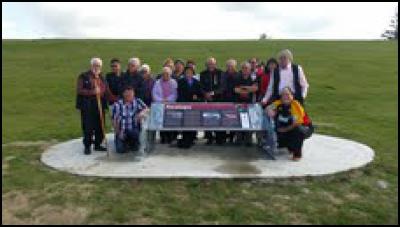Signage shares cultural history
Signage shares cultural history

New signage beside the Manawatū River is helping communicate the tangata whenua, Rangitāne o Manawatū rich history as part of a community project led by Tanenuiarangi Manawatū Incorporated (TMI).
TMI received funding for the two signs from the Manawatū River Leaders’ Accord community grants programme; an initiative supported by Central Government’s Fresh Start for Freshwater Clean-Up Fund.
One sign has been placed at Albert Street, with the other installed alongside the river access steps at Dittmer Drive.
TMI Chief Executive Danielle Harris says the signs aim to tell the story of the river’s significance to Rangitāne o Manawatū.
“One is a double waka prow and the other is an anchor stone. They both have stories told in their carvings, which is included in the information panels,” she says.
“Awatapu was named after the tapu water of the now drained lagoon where Rangitāne o Manawatū tupuna (ancestors) washed the bones of those that had passed before burial. There are several sites of significance in that area with several kainga (small settlements) on both sides of the river and a major battle site on the river flats behind Grasslands and Fonterra.
“The Hokowhitu Reserve has significance as a centre of settlement and aquaculture along with the fortified Pa Te Motu o Poutoa (Anzac Park).”
Both signs were blessed by iwi elders during a small ceremony on Wednesday 10 September.
More information about the Manawatū River Leaders’ Accord is available via the website www.manawaturiver.co.nz
ENDS


 Gordon Campbell: On Why We Can’t Survive Two More Years Of This
Gordon Campbell: On Why We Can’t Survive Two More Years Of This ACT New Zealand: Liquor Stores Serving Us This Summer Deserve Thanks, And A Stronger Voice
ACT New Zealand: Liquor Stores Serving Us This Summer Deserve Thanks, And A Stronger Voice NZTA: Forecast Strong Winds For Auckland Harbour Bridge Traffic
NZTA: Forecast Strong Winds For Auckland Harbour Bridge Traffic Queenstown Lakes District Council: Top 10 Most Hazardous Items Found In QLDC’s Waste Facilities And Rubbish And Recycling Bins In 2024
Queenstown Lakes District Council: Top 10 Most Hazardous Items Found In QLDC’s Waste Facilities And Rubbish And Recycling Bins In 2024 NZ Government: Drive Safely This Summer
NZ Government: Drive Safely This Summer Northland Inc: Game-Changing Investment For Northland - Resilience Fund Allocates $250,000 To Health Simulation & Training Centre
Northland Inc: Game-Changing Investment For Northland - Resilience Fund Allocates $250,000 To Health Simulation & Training Centre Interchurch Bioethics Council: Church Bioethics Agencies Express Dismay at the Rushed Consultation Period for Submissions on the Gene Technology Bill
Interchurch Bioethics Council: Church Bioethics Agencies Express Dismay at the Rushed Consultation Period for Submissions on the Gene Technology Bill


